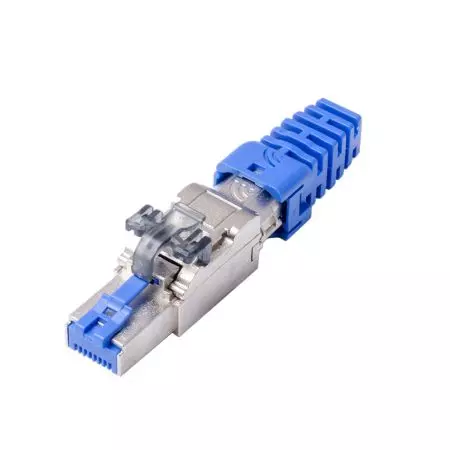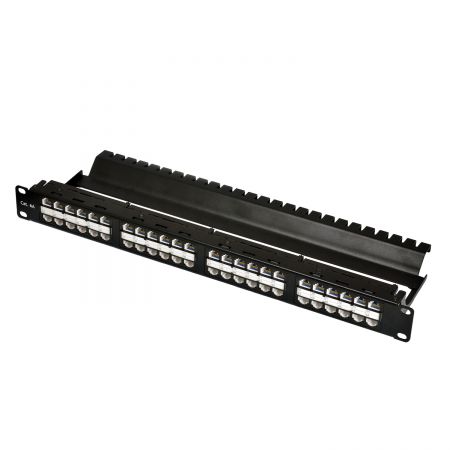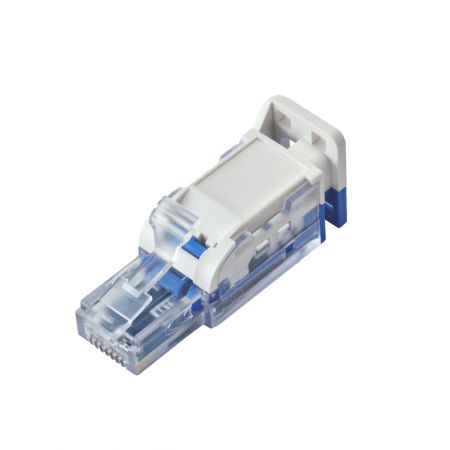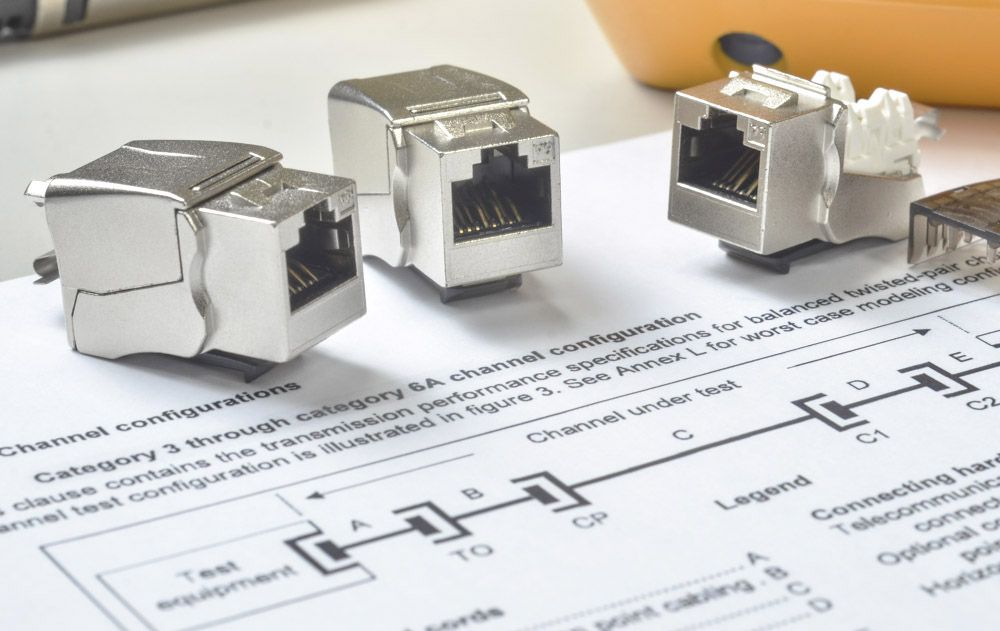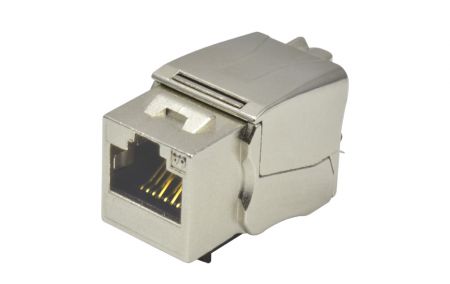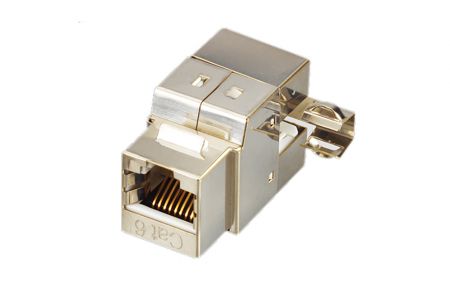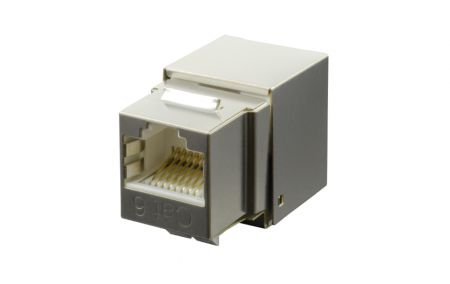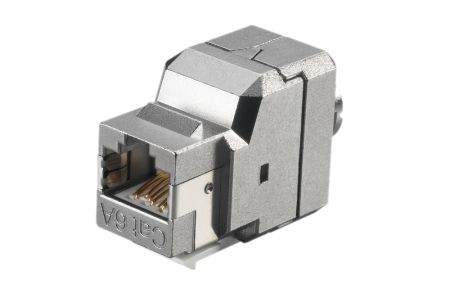STP Channel
Shielded
In this section, you'll find HCI Shielded Channel-Compliant Keystone Jacks.
Why opt for shielded?
In the case of a shielded keystone jack, effective grounding between the cable and connector typically ensures the balanced differential signals stay well balanced, reducing the bad influence of mode conversion. This improvement in balance enhances immunity against alien crosstalk from nearby ports or external sources like motors, generators, air conditioners, and fluorescent lights. Furthermore, when paired with shielded cable, they enhance heat dissipation and attenuation performance, supporting PoE++ 90W sourced from PSE with 71.3W delivered at PD for Class 8 applications.
Considerations for Selecting Channel-Compliant Keystone Jacks
When selecting Channel-Compliant Keystone Jacks, it is recommended not to disregard the cable length between each connection point. In essence, longer cable lengths between connectors generally yield better performance, whereas shorter lengths inevitably increase signal coupling among pairs, adversely impacting overall performance.
To ensure network quality, it is advised to simulate all the configurations that will be used on actual sites, anticipating test results from node to node. Here are a few tips:
- Connect two Channel-Compliant Keystone Jacks to the provided horizontal cable, ensuring it is less than 15 meters in length. Evaluate the performance of the short link.
- If the site demands three to four connections, ensure that there is a segment of cord-patching between two connectors that is shorter than 2 meters (cross-connection in the telecom room) to verify the performance of the channel.
- Confirm that the bid specifications explicitly demand either TIA-568.2-D Cat 6A or ISO/IEC 11801 ClassEa. ISO/IEC 11801 ClassEa is alternatively referred to as ISO/IEC 11801 Cat 6a, creating potential confusion due to the similarity in names. These two standards have distinct limits, with the latter encompassing the former but not vice versa. Double-checking ensures adherence to the specified standards.

